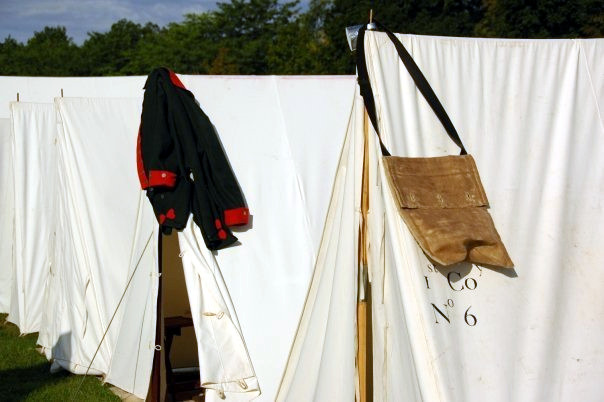
Buying a Tent
Tents in the American Army1 varied in size during the war despite attempts at standardization. It appears that 7’x7’ with a 2 1/2’ to 3’ bell was the intended standard. Tents doors were staked shut – they did not have ties as the modern reproductions do. Tent loops were made of rope. Tent pins (stakes) were most often made of hardwood, but stakes cut from saplings or other immediately available wood were almost certainly used. Tents were marked to easily identify them, especially in supply wagons, so the quartermaster would be able to quickly and easily place them in the appropriate location according to the camp layout.
Athough no period correct tents are commercially available, there are acceptable substitutes. The Regiment recommends the American Revolutionary War wedge tent by Tentsmiths. Panther Primitives also makes a Revolutionary War private’s tent, which is acceptable.

When purchasing your tent:,
- Mud flaps and a ground cloth are not period accurate for infantry tents, but add to the weather resistance of the tent if you desire.
- A tent bag is similarly not period accurate, however it is a considerable convenience for storing and transporting your tent and stakes.
- Modern iron metal stakes are more helpful for very hard ground than wooden ones, and are acceptable.
- You can save on the costs of tent poles by making your own. Instructions are included on the .pdf of this page.
When purchasing your tent - do not add:
- Toggles on the door
- Grommets
A pattern for wooden stakes is described in The Packet: Being a Collection of Patterns, Articles, and Essays Pertaining to the American Revolution, by Mark R. Tulley. Ballindollach Press. 1999.
